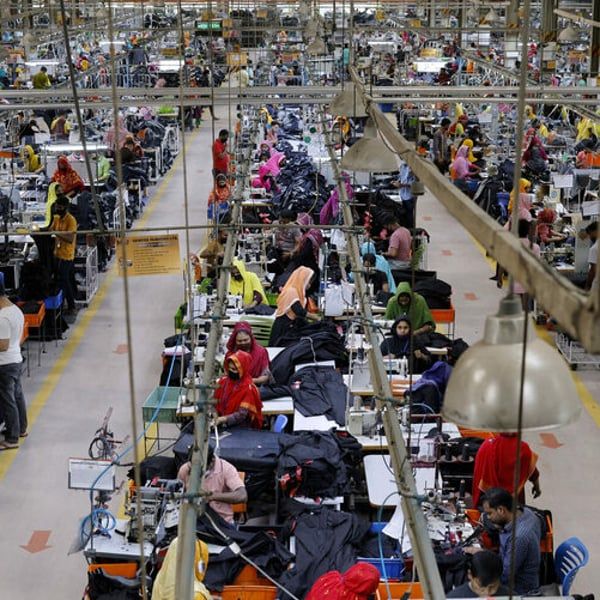By
Reuters
Published
July 11, 2025
In all Asia, unions and industry groups are increasing alarms on the impact of the highest rates by the United States on preparation workers.
High rates can force companies to close or move to neighboring countries that offer lower tariff rates, resulting in significant employment losses, they warn.
“The possible loss of jobs will reduce the income and the ability for workers to maintain their daily lives,” said Ah Thorn, vice president of the coalition of the Democratic Union of the workers of the Cambodians, which represents 80,000 workers in 40 factories.
Several Asia countries have received a warning of new rates of rates imposed by the United States, established to enter into force on August 1, after the end of a 90 -day pause on tariffs.
Manufacturing centers such as Bangladesh and Cambodia will face tariffs of 35% and 36% respectively, while neighboring countries are still negotiating with the United States government.
The president of the United States, Donald Trump, announced the new tariffs through official letters published on his social media platform, Truth Social, on July 8.
The United States remains the largest export destination for Bangladesh garments. The country's exports to the United States totaled $ 8.4 billion last year, with $ 7.34 billion from garments.
In 2024, Cambodia exported almost $ 10 billion in goods to the United States, representing almost 40% of the country's total exports, according to government customs statistics.
More than half of the imports of the USA of Cambodia were garments, footwear and travel items, such as luggage and bags, a sector that constitutes almost half of the export revenues of Cambodia and uses more than 900,000 workers.
Unions and industry groups warn that workers could be affected if higher tariffs push companies to relocate or close operations.
While Cambodia faces a 49% rate reduction imposed in April, anxiety persists in the country's clothing sector, one of the key pillars of its developing economy.
Meanwhile, the United States and Vietnam have reached a commercial agreement that establishes a 20% tariff on Vietnamese goods.
“With a neighbor next door enjoying significantly lower rates, many companies can choose to leave Cambodia,” said Yang Sophorn, president of the Cambodian Unions Alliance, which represents thousands of women working women who support their families.
This fear is resonated by experts in Bangladesh, where a 35% rate is established.
Selim Raihan, professor of economics at the University of Dhaka, said that Bangladesh runs the risk of losing competitiveness if countries such as India, Indonesia and Vietnam receive more favorable commercial terms.
Such disparities could complicate the decision -making of the supply chain and undermine investors, he said.
“As production costs increase and profit margins are reduced due to the rate, many garments can be forced to reduce operations or close completely,” said Raihan.
The new 35% rate on Bangladesh's goods is more than double the current rate of 15%.
“With tariff rates more than duplicate, can you imagine how the cost of products will increase?” Mohiuddun Rubel, former director of the Bangladesh (BGMEA) manufacturing manufacturers association and now additional managing director of the textile firm Denim Expert Ltd.
“The question is what happens with tariffs for the main competitors such as India and Pakistan,” Rubel added.
The United States is negotiating a commercial agreement with India, while reciprocal tariff rates for Pakistan have not yet been announced.
Excessive effect on women
Possible layoffs in the clothing industry would have a huge effect on workers, which Sophorn said he could paralyze entire families.
“If these women lose their work because high rates force factories to close, not only will it affect the economy of Cambodia, but now children cannot go to school and aging parents may not be able to allow medicine,” Sophorn said.
“The situation for working women of the preparation is already bad, but it will worsen if these rates will come into force.”
Many of the women who represent have taken bank loans to support their families and trust the work industry to pay for debts.
“If they lose their job, it means they will lose everything,” Sophorn said.
Tariffs would directly affect a significant portion of the four million workers of the Bangladesh clothing, most of whom are women of low -income and rural environments, said Raihan.
Thorn suggested that Cambodia continues negotiations to reduce tariff load or find alternative ways to expand exports and create jobs.
“If not, we will face problems,” he said.
© Thomson Reuters 2025 All rights reserved.











